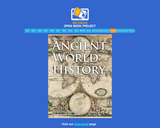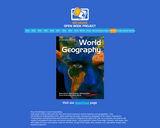
This parent guide supports parents in helping their child at home with the 6th grade Social Studies content.
- Subject:
- Social Studies
- Material Type:
- Reference Material
- Vocabulary
- Author:
- Kelly Rawlston
- Letoria Lewis
- Date Added:
- 10/12/2022

This parent guide supports parents in helping their child at home with the 6th grade Social Studies content.

This resource accompanies our Rethink 6th Grade Social Studies course. It includes ideas for use, ways to support exceptional children, ways to extend learning, digital resources and tools, tips for supporting English Language Learners and students with visual and hearing impairments. There are also ideas for offline learning.

A website resource that provides facts and data that documents the forced removal of enslaved persons from Africa and their arrival to North Carolina.

Seventh grade students will review the tools and mental constructs used by historians and geographers. They will develop an understanding of Ancient World History, Eras 1 – 4. Geography, civics/government, and economics content is integrated throughout the year. As a capstone, the students will conduct investigations about past and present global issues. Using significant content knowledge, research, and inquiry, they will analyze the issue and propose a plan for the future. As part of the inquiry, they compose civic, persuasive essays using reasoned arguments.

In this short video and accompanying activity and readings, students learn about navigating the Lumber River and the people who navigated it for hundreds of years.

This course was created by the Rethink Education Content Development Team. This course is aligned to the NC Standards for 6th Grade Social Studies.

This course was created by the Rethink Education Content Development Team. This course is aligned to the NC Standards for 6th Grade Social Studies.

The 6th grade MI Open Book Geography Text explores the five themes of geography, first by providing an introduction to the study of geography itself, then focusing in on a theme each chapter while studying a region of the world. The final chapters explore the themes in action in other regions.

Quite simply, “Geography” broken down means “to study the earth” and throughout your studies in the book, we are going to expand on this definition. If you were to go home and ask your parents about geography they may have studied in school, they might say when they were students they memorized the states and capitals, or major countries in the world. This is only one part of what geography really is however. To study geography is to study where we are in the world; what the world around us is like. It is the study of who lives there and why.

The landmass of North America lies in the Western Hemisphere. It is bordered by the Arctic to the north, the continent of South America and the Caribbean Sea to the south, the Atlantic Ocean to the east, and the Pacific Ocean to the west. The land is rich in resources like coal, natural gas, oil, timber products, freshwater, and an abundance of plant and animal species. Renewable resources such as wind, water, biomass, geothermal and solar are widely used as well.

The area known as Latin America is made up of the region south of the United States, beginning at the river that separates the U.S. from Mexico, the Rio Grande’, and extending to the southern tip of South America, an area known as Cape Horn.

The region of North Africa and the Middle East lies at the continental crossroads of Asia, Africa and Europe. At this intersection of the world, all three continents meet here at the Mediterranean Sea. The region extends from the eastern border of Pakistan to the Atlantic coast of Morocco in the west. The region includes many diverse landscapes. It contains rugged mountains, vast deserts, spacious plains and is surrounded by numerous seas. In this unit, you will learn how geography impacts the way people live. You will also discover how culture impacts a person’s perspective.

Russia, with over 6.6 million square miles of varied climate and landscape, is the largest country in the world. It is nearly twice the size of the United States or Canada. Covering almost one-eighth of the Earth’s surface, it ranges from the Arctic Circle in the north, to the borders of China in the south, from Europe in the west to the Pacific Ocean to the east. It spreads through two continents and 11 time zones. The Ural Mountains, some of the oldest mountain ranges, stretch from the north to the south. Russia borders more countries than any other and has 12 major seas.